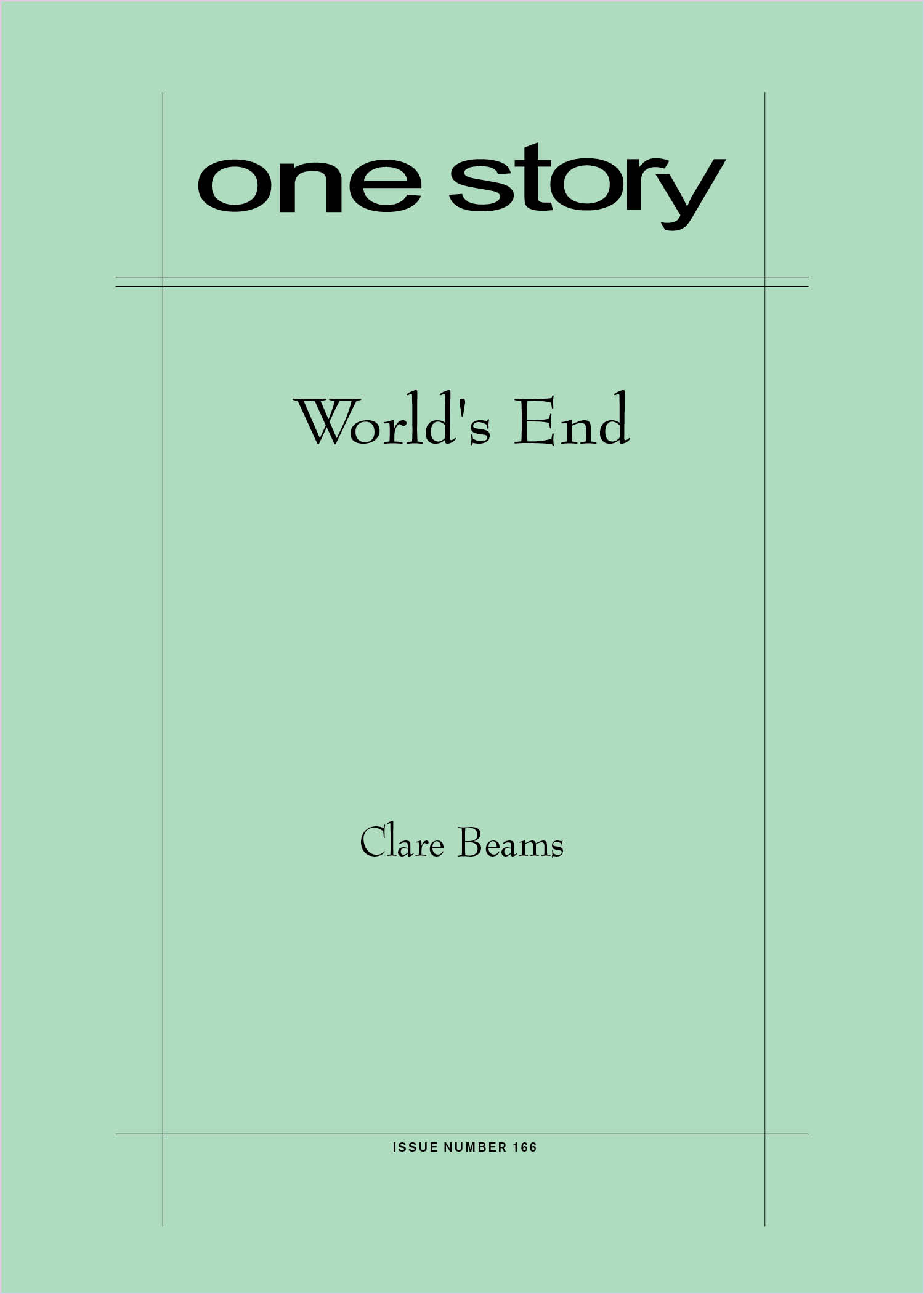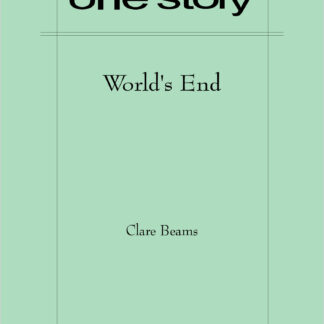
World’s End
$2.50
23 in stock
Excerpt
By the time the World’s End job came to him, the architect was twenty-six but no longer considered himself young, if he ever had. He felt his professional life had begun. He shaped land, not buildings: he was a builder of landscapes, one of the first of his kind in New York, though this was the 1880s and Olmsted had already carved out Central Park, strange hole in time and space, in the middle of the skyward-straining city.
These were the days when wealthy people were just coming to realize what their commerce had paved and grimed over, and to miss that green in the pure religious way they missed the childhood of their earliest memories. The architect had a knack for making the lost thing feel less lost, for sculpting expansiveness into a city courtyard. The clients who had hired him for his five paying jobs so far seemed to consider this a kind of magic. To the architect himself, summoning space felt simple as instinct. In the two-room apartment on the Lower East Side where he had grown up, with six brothers and sisters, he had learned to thirst for it.
Clare Beams
Clare Beams’s fiction has appeared or is forthcoming in FiveChapters, Best American Nonrequired Reading 2011, Willow Springs, Hayden’s Ferry Review, Inkwell, online at n+1, and elsewhere. One of her stories earned a special mention in the Pushcart Prize XXXV. She received her MFA from Columbia University in 2006. She and her husband live in Massachusetts, where she has spent the past six years teaching ninth-grade English. She recently finished her first novel.
Q&A by James Scott
- JS: Where did the idea for this story come from?
- CB: That’s an easier question to answer with this story than with many, because World’s End is a real place—though I’ve taken pretty brazen liberties with its actual geography and history. The real World’s End is a park in Hingham, Massachusetts, twenty minutes away from where I live, and it was originally supposed to be an early subdivision. In real life, it was landscaped by Frederick Law Olmsted. The first time I went there, I was struck by what a strange, beautiful place it is: you’re walking along and one minute you’re in a sort of old New England village without the village, all these careful carriage lanes and stately trees, and the next you’re by a salt marsh, and the next you’re in the middle of the woods. I started thinking about what it might have been like to design a place like that, especially given that the intended houses were never put in. It seemed, though, like the stakes of success or failure wouldn’t have been too high for a post-Central-Park Olmsted. So I changed the way things happened: I made my protagonist a much younger landscape architect, to whom everything about this project would matter very much. The first inspiration was really the feel of the place itself. I still go back there to walk all the time. It’s kind of strange, to be actually in a place you’ve spent a lot of time imagining.
- JS: What was the most challenging aspect of writing this story?
- CB: Oh, the ending. Seems like it’s almost always the ending, for me. Except once I scratch the surface of why the ending’s not working, it turns out to be because of all the things I left out or botched in the beginning and middle.
- JS: What made you pick this time and place to set “World’s End”?
- CB: Well, the time and place in which the story is set are roughly accurate for the real World’s End. But I changed enough real things in the course of writing the story that I could have changed those, too. I think I stuck to this time, the late 19th century, because it’s a historical moment that interests me—the cities were exploding and people were beginning to realize that space was something they’d better think about if they wanted to have any of it left, a realization that fueled the early wave of landscape architecture in this country. I wanted the architect to feel that need for space, and also to have the sense that he was doing something pretty new. As for the place, Becca and Cale’s class and wealth seemed important to the story, and when you drive through Hingham you can still see centuries of wealth on display. It seemed like a promising spot to put all of them.
- JS: How much research did you do?
- CB: I ended up doing a fair amount, in a sort of haphazard way. When I first had the idea for the story I looked into the past of the real World’s End, and then did some reading about the early days of landscape architecture until I felt like I’d soaked up enough to get started. There’s a book called Frederick Law Olmsted, Sr.: Founder of Landscape Architecture in America that was especially helpful; it includes copies of some of Olmsted’s original sketches for some of his projects, which helped me get a sense of how my architect might look at the world. Then it started to feel like time to jump in, so I did. I tried to find the answers to the other questions that came up (interior decoration in the 1880s? road-building methods?) as I went.
- JS: The idea of being driven by failure seems to power both Cale and the architect. Did you conceive of them as twinned characters?
- CB: I did, yes—twinned by their fears, at least. I wanted Cale to be in the architect’s way, but I also wanted the architect to have to recognize himself in Cale, to identify with what Cale is telling him even as Cale is telling him no. Each of them walks around haunted by his private vision of the end of the world, and that does make them similar, though they want different things in this story.
- JS: Cale’s dialogue when he tells the architect he’s leaving the land the way it is, especially, “I like it all empty, the way you’ve done it,” is wonderful. What’s your relationship with the land? Are you the kind of person who likes the compactness of the city or something more open?
- CB: I love cities, but there is a big part of me that craves open space; I get kind of panicky if I can’t see any green. My husband and I would probably live in the middle of nowhere, if we could.
- JS: The incomplete action that seems to haunt the architect, even long after it doesn’t happen, is one of the best parts of the story. How do you think it would have gone, had he been able to convince Becca to go look out over the property?
- CB: I really don’t think Becca could ever have seen what he sees. She’s so linked to the land in his mind, but she’s just not what he wants her to be, and so she never would have understood him. Because he can’t convince her to survey what he’s created, he never gets a chance to learn that—which is why this ending seemed sad, and right, to me.
- JS: Why did you choose not to give the architect a name?
- CB: Honestly, at first it was just because that was how I started to hear the story when I began work on it. But over time it came to seem to me a fitting way to refer to this character at this point in his life, when he’s trying to paste his new profession over every other aspect of himself. I also liked the way that Becca and Cale are named and the architect isn’t. I think (or hope) that the difference helps show his separation from them—a separation he spends a lot of the story dreaming he can undo.
- JS: How long did it take you to complete this story?
- CB: The first draft was quick, maybe two weeks or so. Then I reworked for a couple of months and sent the story out. Once One Story accepted it, we spent many more months and so many drafts I’ve now lost count making the story much longer and much better (thank you, thank you!).
- JS: What are you working on now?
- CB: I’ve just finished polishing up my first novel, tentatively called BETTER STATES OF GRACE, with the help of my agent, the wonderful Michelle Brower. It’s about a Presbyterian minister and his family who find their world upended by a faith-healing at the evangelical church down the street. In subject matter and time period it’s very different from “World’s End,” but it shares some of the same preoccupations: about the risks of believing in something, and the ways we perceive and misperceive the people around us. I’m writing a new short story about some mysterious things that happen to a family on a camping trip. And I’m in the very early, every-last-thing-could-change stages of a novel about a school.
- JS: What is the best bit of advice about writing you have ever received?
- CB: No one ever, ever has to read what you’re writing. I guess that should be obvious, but I think I lost sight of it for a while. Then, after I finished my MFA and moved up to Massachusetts to teach high-school English, I found very little time to write for a couple of years; when I came back to it, I was just so thrilled to be writing again that I wasn’t thinking much about any particular reader and what he or she might have to say about what I was doing. It was this kind of great Hey! None of this has to work! feeling. For me, early drafts seem to be best when they feel like experiments—when they do plenty of toppling over into failure, so I can see where the limits are.
